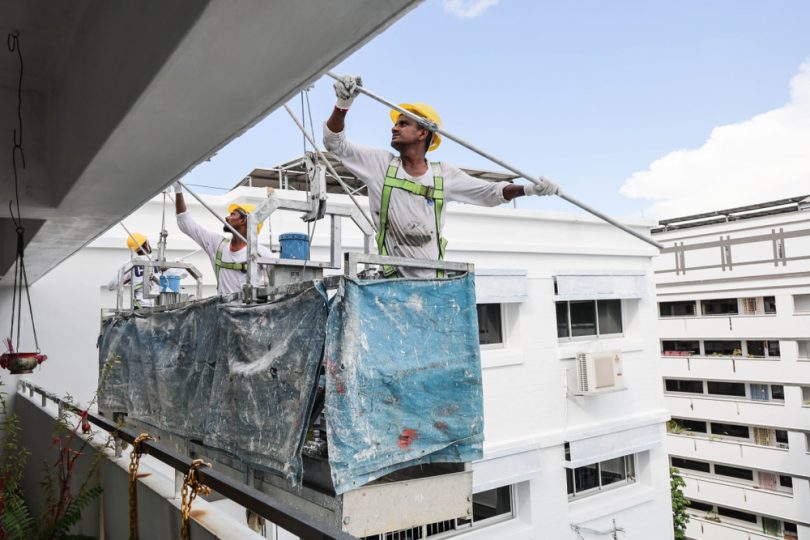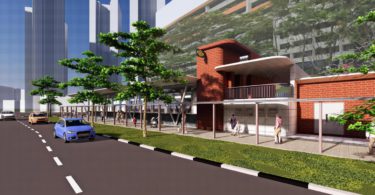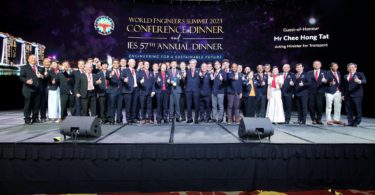In April 2020, when the COVID-19 outbreak started to affect the built environment sector extensively, Construction+ interviewed two employers from Vietnam, Le Ngoc Ho and Nguyen Ha Trang, about the impact of COVID-19 on their businesses. They mentioned that some projects were still operational but with slow progress, and that the work-from-home (WFH) scheme greatly reduced productivity.
They expected that the adoption of technology during the WFH period and the social distancing practice may change the work environment permanently, and that businesses would need to adapt and switch their working methods to anticipate crises in the future.
Six months later, on 29 September 2020, during the CEOs’ panel discussion in the International Built Environment Week (IBEW) 2020, Niel Yong, Executive Director of Woh Hup (Private) Limited, expressed similar ideas about how the crisis has impacted companies.
AGILITY AND ADAPTABILITY
Yong’s perspective is more or less in line with Ho and Trang’s, maintaining that the focus has to be on agility and adaptability. Below are the key takeaways he learned from the COVID-19 pandemic:
- First and foremost, as a director, Yong has to educate himself on the pandemic and its impacts, and keep himself updated on the policies and regulations to ensure that there is high level of compliance among the workforce and within the companies.
- Then, to navigate the changes, he has to think of new initiatives to ensure that the company is adapting in the right direction. This includes determining the top important targets as well as the strategies to weather the storm and to thrive in the new normal.
- Thinking ahead, he concurred that we need to do things differently. Change and learning agility are important as COVID-19 has taught us the need to be able to adapt if we want to survive.
TOWARDS LESS RELIANCE ON LABOUR
Meanwhile, in July 2020, when lockdowns were relaxed gradually in Singapore, there was a lot of attention about the construction sector’s heavy reliance on foreign labour. Trade bodies and associations in Singapore at that time released a joint statement declaring that the economy will suffer without them. The built environment sector still needs foreign workers regardless.
Also read: Protecting construction workers in the new normal
Offering local workers construction work may not be a solution because the level of interest among Singaporeans is low and the domestic population is small. The question is, since Singapore has been pioneering the off-site Prefabricated Prefinished Volumetric Construction (PPVC) and Design for Manufacturing Assembly (DfMA), will the nation be able to adopt more OEDC countries’ style of construction, with higher costs but higher productivity?
By way of illustration, an employee in the construction industry in Singapore receives a net payment of up to US$1,279, while a wage earner in the private sector in Sweden receives up to US$2,073 and in Germany, up to US$2,166; with weekly work hour being 51.9, 38.1 and 39.0 respectively (worldsalaries.org). While this may not fully capture the cross-region comparison, the numbers give us an impression that costs are much higher in OECD countries.
In response to such a question, Yong claimed that Singapore may never be like any of the OCDC countries that rely 100 per cent on the local workforce. He argued that the adoption of technology is not based on the economic development of a country but on the region, and Southeast Asia is still largely reliant on labour. In addition, Singapore does not have the size and the population, as well as the willingness of the population, to do so.
What we need to focus on, instead, is how we can attract more Singaporeans into the industry by creating better jobs. One thing to note: even though we are not able to be 100 per cent local, we should continue what BCA and the government has pursued and move toward less reliance on manual labour, not only to overcome the hurdles caused by the pandemic, but also to achieve a long-term sustainability.– Anisa Pinatih, Construction+ Online
Disclaimer: Construction+ makes reasonable efforts to present accurate and reliable information on this website, but the information is not intended to provide specific advice about individual legal, business, or other matters, and it is not a substitute for readers’ independent research and evaluation of any issue. If specific legal or other expert advice is required or desired, the services of an appropriate, competent professional should be sought. Construction+ makes no representations of any kind and disclaims all expressed, implied, statutory or other warranties of any kind, including, without limitation, any warranties of accuracy and timeliness of the measures and regulations; and the completeness of the projects mentioned in the articles. All measures, regulations and projects are accurate as of the date of publication; for further information, please refer to the sources cited.
Hyperlinks are not endorsements: Construction+ is in the business of promoting the interests of its readers as a whole and does not promote or endorse references to specific products, services or third-party content providers; nor are such links or references any indication that Construction+ has received specific authorisation to provide these links or references. Rather, the links on this website to other sites are provided solely to acknowledge them as content sources and as a convenient resource to readers of Construction+.











